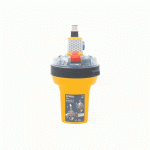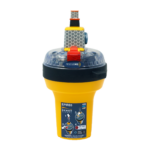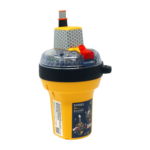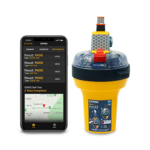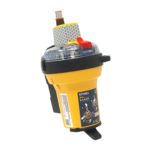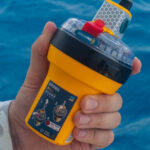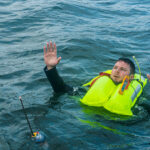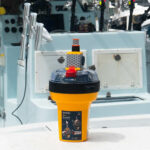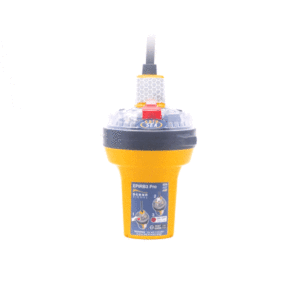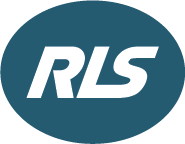
Return Link Service (RLS Capable)
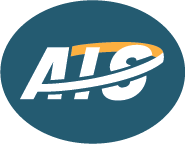
Integrated AIS Alert

Rugged and Waterproof

406MHz & 121.5MHz Signals

Visible Light and IR Strobe

MEOSAR Compatible
Ocean Signal’s new EPIRB3 (Emergency Position Indicating Radio Beacon) increases reliability and eases rescue operations with new advanced features. This new GMDSS Approved EPIRB transmits a digital mayday on 406 MHz notifying rescuers globally via satellite and broadcasts Automatic Identification System (AIS) VHF signals locally to help rescuers find the beacon faster. Once activated the EPIRB3 transmits an emergency signal to the global Cospas-Sarsat satellite rescue system, and simultaneously sends out an AIS alert on VHF frequencies which can be seen immediately by any nearby vessel equipped with AIS. Return Link Service (RLS) provides visual confirmation to the user that their distress message has been received. The combination of AIS, a 121.5 MHz homing signal, and visible and infrared strobe lights speed recovery times by allowing rescuers to pinpoint the beacon location, even if it has drifted, regardless of the time of day or night. Near Field Communication (NFC) is a great new feature that allows users to monitor the EPIRB3 using a free mobile smartphone App, ensuring that the battery has sufficient power and the beacon is functioning properly before heading out.
Advanced marine safety and rescue technology from Ocean Signal in the new EPIRB3 with AIS combines innovative new features into a compact, ergonomically designed case that is ideal for all types and sizes of recreational and commercial vessels.
Rescue times can improve with Global activation combined with AIS Local beacon broadcast.
The EPIRB3 uses the GNSS (GPS, Galileo, Glonass) positioning networks to derive its location globally. When the beacon is triggered a 406 MHz distress transmission relays this GPS EPIRB (GPIRB) position, accurate to within 100 meters, to the worldwide Cospas-Sarsat search and rescue satellite network. Ground stations connected to the satellite system receive EPIRB identification and position of deployment information so rescue operations can be coordinated and initiated. With advanced AIS technology now incorporated into the EPIRB, directly upon activation the beacon starts transmitting AIS signals so that nearby AIS equipped vessels are instantly notified of the distress situation and are provided the beacon location. AIS equipped vessels within VHF range will see a safety message on their screens that includes the MMSI vessel identification. Local vessels can start rescue and recovery operations immediately, potentially speeding recovery times and saving lives. Since an AIS target is presented on the onboard display of any nearby AIS equipped vessel, they can easily navigate directly to the EPIRB by selecting the AIS target. Even when no local vessels are available, AIS will speed recovery times by allowing maritime SAR operators to pinpoint the EPIRB’s location as they approach. The combination of Global satellite distress calling, precise GPIRB location transmission and local AIS safety messaging will greatly improve recovery time and success.
Near Field Communication (NFC) provides EPIRB diagnostics using a smartphone.
Emergency Position Indicating Radio Beacon users can now check their EPIRB by connecting their smartphone to it with NFC (Near Field Communication). This technology connects a smartphone placed adjacent to the EPIRB3 by launching the free Ocean Signal Product App automatically. Full diagnostics are available in the app showing the user the current battery life, number of self-tests completed, number of GNSS tests completed, and how long the EPIRB has been activated. Detailed information including a map view that shows where a GNSS test was performed, the date and time of the test, the time it took the EPIRB to get a fix on the GNSS coordinates, number of satellites used to obtain that fix, and the accuracy of the fix are all conveniently displayed. Ocean Signal’s free Mobile App and NFC functionality provide users all the information they need to confirm their EPIRB is fully functioning and ready for deployment in case of an emergency.
Convenient Return Link Service (RLS) tells users that their distress call has been received.
EPIRBs are deployed in times of distress and rescue operations can take time especially if the vessel in distress is far offshore. The EPIRB3 is equipped with Return Link Service that notifies users that the beacon distress signal has been delivered. The RLS signal is sent back through the Galileo satellite network to confirm that the distress message along with the precise EPIRB location and identifiers have been received. A simple flashing blue light tells users that the EPIRB has successfully connected through the satellite network and rescuers will be notified. Knowing that the digital mayday has been successfully communicated along with the EPIRB identification and beacon location helps those in distress remain calm while awaiting rescue operations.
Mounting Bracket
The EPIRB3 comes complete with a Category two manual release mounting bracket. This bracket securely stores the EPIRB3 for the duration of your trip regardless of the conditions experienced throughout. It also provides a quick release so the EPIRB can swiftly and easily be removed when needed.
Ocean Signal uses advanced technology and quality manufacturing processes to develop and produce quality electronic rescue devices and other life-saving products. The new EPIRB3 with its contoured profile is equally suited for both sail and powerboats. Both recreational and commercial users can be assured that the features in this new Emergency Position Indicating Radio Beacon provide the highest chance of an efficient and successful rescue no matter where they go. A host of high-tech features in the EPIRB3 combine with a unique design that allow it to be used effectively on all types of vessels whether working or playing near shore, offshore, or crossing the globe.
For Category 1 Float Free Version: SafeSea EPIRB3 Pro
Features:
- 30%(typ) smaller
- AIS distress alert
- Return Link Service (RLS)
- Mobile connectivity utilizing Near Field Communication (NFC)
- Free App (Apple & Android)
- 10 year battery life
- 48+ hours operational life
- 5 year warranty
- Fast accurate positioning with 72 channel GPS
- Retractable antenna
- Quick release bracket
- Secure lanyard
